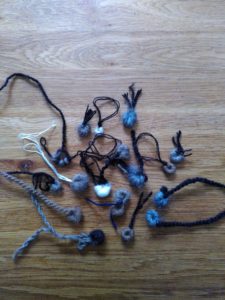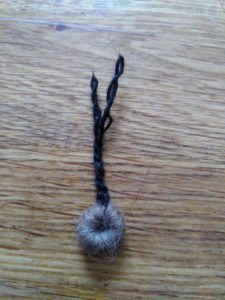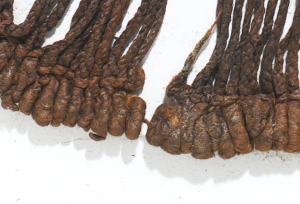Search the Blog
Latest Comments
Beatrix
Experiment!
23. April 2024
The video doesn´t work (at least for me). If I click on "activate" or the play-button it just disapp...
Katrin
Spinning Speed Ponderings, Part I.
15. April 2024
As far as I know, some fabrics do get washed before they are sold, and some might not be. But I can'...
Kareina
Spinning Speed Ponderings, Part I.
15. April 2024
I have seen you say few times that "no textile ever is finished before it's been wet and dried again...
Katrin
How on earth did they do it?
27. März 2024
Ah, that's good to know! I might have a look around just out of curiosity.
I've since learned that w...
Heather Athebyne
How on earth did they do it?
25. März 2024
...though not entirely easy. I've been able to get my hands on a few strands over the years for Geor...
So many tests.
One of the things when doing a reproduction or reconstruction that always happens? More testing and trying out methods and materials than you'd have anticipated.
There's often that nagging feeling that there might be a better method. Or a better material. So you're looking at different ways of doing stuff, sometimes completely different, sometimes just a slight variation of what you tried before. At some point, though, there's a working method that does, yes, work - and then it's best to stop messing around and stop looking for something even better, even neater, even closer to the original... even though it may be tempting.
The optimal outcome is when you get to do enough testing beforehand that you end up with a really nice method when starting the actual piece... and that, usually, means more preliminary tests than planned for. Especially when it's a small but important thing that, on its own, is made rather quickly, testing it once more, practising it again, and trying out another fibre can be sort of addictive.
Case in point? The wool-wrapped rings on the bottom edge of the Egtved skirt. Yes, I did get some practice in with making such rings on the belt tassel... but they were still rather awkward to make, took a long time, and I was not overly happy with how the fibre behaved while working the rings.
Especially "took a long time" is a key thing here. With more than 300 rings, each minute that one of the rings takes will make a difference of more than 5 hours total work time. One minute adds up. The rings on the original also look very nice and neat... which can be achieved by picking the right wool.

There's a lot of different possibilities to make these rings, starting from what happens with the ends of each cord to how they are inserted into the fibre wrap or how the fibre is wrapped around them. My current favourite process involves a skewer stick, two needles, and longer ends to work the rings, and its end result looks like this:

Here's a picture of some of the original rings for comparison:
[caption id="attachment_6529" align="alignnone" width="300"] Detail from this image from the Danish National Museum.
Detail from this image from the Danish National Museum.
So... what do you think? Is it a match?
There's often that nagging feeling that there might be a better method. Or a better material. So you're looking at different ways of doing stuff, sometimes completely different, sometimes just a slight variation of what you tried before. At some point, though, there's a working method that does, yes, work - and then it's best to stop messing around and stop looking for something even better, even neater, even closer to the original... even though it may be tempting.
The optimal outcome is when you get to do enough testing beforehand that you end up with a really nice method when starting the actual piece... and that, usually, means more preliminary tests than planned for. Especially when it's a small but important thing that, on its own, is made rather quickly, testing it once more, practising it again, and trying out another fibre can be sort of addictive.
Case in point? The wool-wrapped rings on the bottom edge of the Egtved skirt. Yes, I did get some practice in with making such rings on the belt tassel... but they were still rather awkward to make, took a long time, and I was not overly happy with how the fibre behaved while working the rings.
Especially "took a long time" is a key thing here. With more than 300 rings, each minute that one of the rings takes will make a difference of more than 5 hours total work time. One minute adds up. The rings on the original also look very nice and neat... which can be achieved by picking the right wool.

There's a lot of different possibilities to make these rings, starting from what happens with the ends of each cord to how they are inserted into the fibre wrap or how the fibre is wrapped around them. My current favourite process involves a skewer stick, two needles, and longer ends to work the rings, and its end result looks like this:

Here's a picture of some of the original rings for comparison:
[caption id="attachment_6529" align="alignnone" width="300"]
 Detail from this image from the Danish National Museum.
Detail from this image from the Danish National Museum.So... what do you think? Is it a match?
Comments
No comments made yet. Be the first to submit a comment



